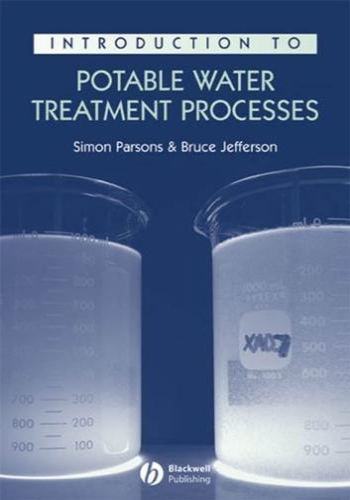Chapter 1: Introduction
* Definition and Significance of Potable Water: Emphasizes the importance of clean, safe drinking water for human health and well-being.
* Water Sources and Types of Water Treatment: Discusses various sources of water, including surface water, groundwater, and desalinated water, and outlines the different treatment processes required for each.
Chapter 2: Coagulation and Flocculation
* Introduction to Coagulation: Explains the process of destabilizing colloidal particles in water through the addition of a coagulant, such as aluminum sulfate or ferric chloride.
* Theory of Coagulation: Describes the chemical and physical mechanisms involved in coagulation, including charge neutralization, bridging, and sweep floc formation.
* Jar Testing: Introduces jar testing as a method for selecting the optimum coagulant and dosage parameters based on experimental results.
Example: A municipal water treatment plant uses jar testing to determine the optimal aluminum sulfate dosage for coagulating surface water with high turbidity. The results show that a dosage of 10 mg/L effectively removes most of the turbidity without creating excessive sludge.
Chapter 3: Sedimentation and Clarification
* Principles of Sedimentation: Discusses the principles of sedimentation, including Stokes' law, settling velocity, and detention time.
* Types of Sedimentation Tanks: Describes different types of sedimentation tanks, such as rectangular, circular, and inclined-plate clarifiers.
* Operation and Maintenance of Sedimentation Tanks: Explains the importance of maintaining proper sludge removal and overflow rate control to ensure efficient clarification.
Example: A water treatment plant operates a series of rectangular sedimentation tanks to settle out the flocculated particles from the coagulation process. Regular sludge removal and optimization of the overflow rate ensure that the tanks consistently produce clarified water with low turbidity.
Chapter 4: Filtration
* Introduction to Filtration: Discusses the principles of filtration, including the removal of suspended solids through the use of a porous medium.
* Types of Filters: Describes various types of filters used in water treatment, such as slow sand filters, rapid sand filters, and membrane filters.
* Filter Performance and Monitoring: Explains the parameters used to monitor filter performance, such as turbidity, head loss, and flow rate.
Example: A water treatment plant uses rapid sand filters to remove fine particles from clarified water. The filters are backwashed regularly to remove accumulated solids and maintain a high flow rate. Monitoring of turbidity and head loss ensures the filters are operating effectively.
Chapter 5: Disinfection
* Importance of Disinfection: Emphasizes the crucial role of disinfection in preventing waterborne diseases.
* Types of Disinfectants: Describes different types of disinfectants commonly used in water treatment, such as chlorine, chloramines, and ozone.
* Disinfection Reactions and Residuals: Discusses the chemical reactions involved in disinfection and the importance of maintaining an adequate residual disinfectant concentration.
Example: A water treatment plant uses chlorination as a primary disinfectant. The plant monitors the total and free chlorine residuals in the treated water to ensure that a sufficient level of disinfection is maintained throughout the distribution system.
Chapter 6: Advanced Treatment Processes
* Introduction to Advanced Treatment: Discusses the need for advanced treatment processes to address specific water quality challenges, such as the removal of emerging contaminants.
* Types of Advanced Treatment Processes: Describes various advanced treatment technologies, including granular activated carbon adsorption, membrane filtration, and ion exchange.
* Applications and Benefits of Advanced Treatment: Explains the applications and benefits of advanced treatment processes for improving water quality and addressing specific contaminants.
Example: A water treatment plant facing challenges with taste and odor issues implements granular activated carbon adsorption to remove organic compounds responsible for these problems. The advanced treatment process effectively improves the organoleptic properties of the treated water.
Chapter 7: Water Quality Monitoring and Control
* Importance of Water Quality Monitoring: Emphasizes the need for continuous water quality monitoring to ensure the safety and reliability of drinking water supplies.
* Types of Water Quality Parameters: Describes various water quality parameters monitored in water treatment, such as turbidity, microorganisms, and chemical contaminants.
* Control Systems for Water Treatment Plants: Discusses the use of control systems to automate and optimize water treatment processes based on real-time monitoring data.
Example: A water treatment plant has an automated control system that adjusts the coagulant dosage based on the real-time turbidity readings. The control system ensures consistent and effective coagulation and flocculation, resulting in improved water quality.







